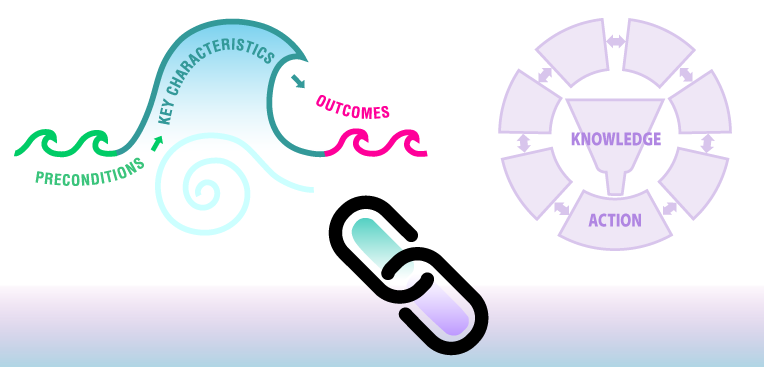

Linking to other elements of the Social Movement Action Framework
Elements of the Social Movement Action (SMA) Framework are dynamic and interrelated. For example, a receptivity for change can be linked to the other two preconditions: "Change is valued and necessary" and "Examples of social movements are recognized". When change is valued and necessary, individuals are motivated to start getting involved in the change; this can support "Activism" energy of high intensity and positive quality. When examples of social movements are recognized, it can inspire and motivate others to take a people-led approach to change. This too can increase receptivity for using social movement actions.
Linking to the action cycle phases of the Knowledge-to-Action Framework
You and your change team’s capacity in social movement actions may be enhanced and/or accelerated by the addition of some of the action cycle phases of the Knowledge-to-Action (KTA) Framework, as the two frameworks are complementary. In addition to the two linking examples described earlier in this section, there can be many other points of connection between the two frameworks. Here are three more examples for your consideration:
- Identify the problem: Once receptivity to change for a shared concern or desired change is recognized, you and your change team can use the KTA Framework's "Identify the problem" phase to clearly determine the issue or issues you would like to address. In this phase, you can perform a gap analysis to identify problems or practices that can be feasibly addressed in your setting.
- Adapt knowledge to local context: An understanding of the context will help you decide whether there is an opportunity for change. To ensure that the identified problem can be addressed effectively, you and your change team should consider contextual factors such as: 1. whether the nature of the leadership culture is formal or informal; 2. which resources are available to effect the change; and 3. which stakeholders will effect the change or be affected by it?
- Assess facilitators and barriers: Identify and assess the facilitators and barriers that will help or hinder the change. This will help you and your change team decide whether there is receptivity to change for a shared concern or desired change.
For more discussion about the dynamic links between the elements of the SMA Framework to one another and to the KTA Framework, see the section "Accelerate your success with the Leading Change Toolkit™".
